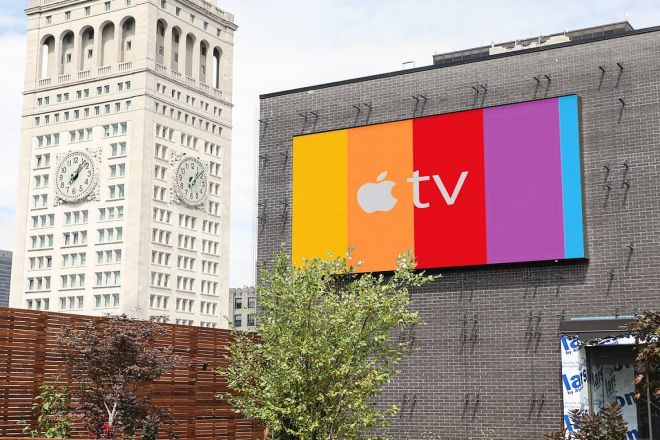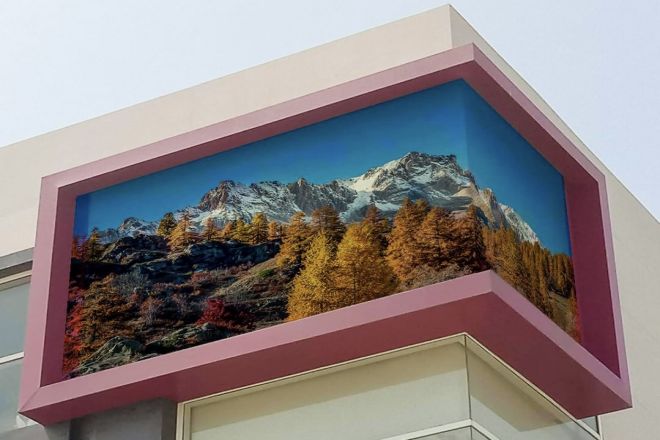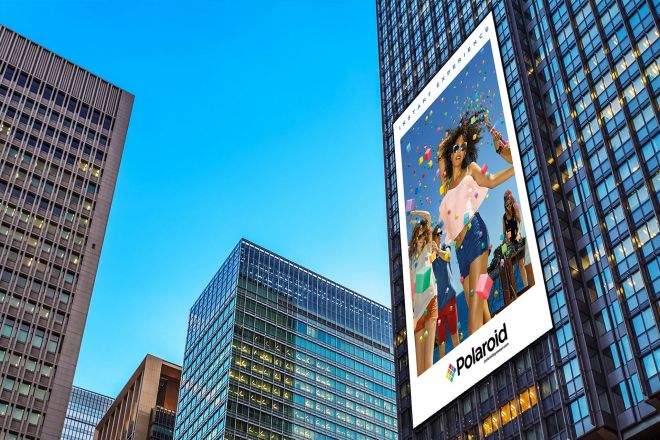Introduction

Many customers who are new to ecran LED exterior, may encounter a series of questions and confusion. For example: How does an ecran LED exterior work?
What are the key features to consider when ecran LED exterior? How do I choose the right ecran LED exterior for my event or venue? These problems may become obstacles for customers in the rental and use process.
In the following content, we will start with leasing-related issues one by one and provide customers with detailed answers and practical suggestions. We hope that this article can help customers better understand the rental and use of ecran LED exteriors and ensure that they can maximize their promotional effect in various outdoor activities.
1. How does an ecran LED exterior work?

The working principle of the ecran LED exterior is similar to that of an ordinary LED display, and its work is based on the light-emitting principle of a light-emitting diode (LED). Here is a brief overview of how ecran LED exteriors work:
- LED lighting principle:
LED (Light Emitting Diode) is a semiconductor device. When current passes through it, the PN junction inside it emits light. The color of LED light depends on the type and chemical structure of its semiconductor material.
In the ecran LED exterior, a large number of LED lamp beads of different colors (such as red, green, and blue) are used. By controlling the brightness and color combination of these LED lamp beads, various colors and images can be displayed.
- Control System:
ecran LED exteriors are usually composed of multiple LED modules; each module contains multiple pixels, and each pixel is composed of LED lamp beads in three colors: red, green, and blue.
The control system is the core part of the LED display screen. It is responsible for receiving external signals (such as video, images text, etc.) and converting them into a signal format that the LED display screen can recognize. The control system usually includes the main controller, signal processor, driver chip, and other components.
The main controller is the core of the entire system, responsible for receiving and analyzing external signals, and then sending control signals to the driver chip based on the analysis results. The driver chip is responsible for driving the brightness and color changes of the LED lamp beads according to the control signal.
- Display content transfer:
To display content on an LED display, you first need to convert the images, videos, or text that need to be displayed into a signal format that the LED display can recognize. This is usually done through specialized software or equipment.
The converted signal is transmitted to the control system of the LED display through data transmission (such as wired transmission or wireless transmission). The control system then decodes these signals and sends them to each LED module to display the content.
- Heat dissipation and protection:
Since the outdoor LED display screen works under high brightness and high load for a long time, it will generate a lot of heat. Therefore, the heat dissipation system is crucial to ensure the stable operation of the LED display. The cooling system usually includes heat sinks, cooling fans, and other devices to dissipate heat to the surrounding environment.
In addition, in order to protect the LED display screen from the impact of the external environment (such as rain, dust, etc.), protective measures such as waterproofing and dustproofing are usually adopted.
- Maintenance:
Ecran LED exteriors require regular maintenance and upkeep to ensure their normal operation and extend their service life. This includes cleaning the display surface, checking connecting cables and interfaces, updating and backing up control system software, etc.
2. What are the key features to consider when ecran LED exterior?
When ecran LED exterior, it is important to consider the following key features:
- Brightness:
The brightness of an outdoor LED display is one of its most important features. Due to the strong lighting in outdoor environments, the display needs to be bright enough to be clearly visible under direct sunlight. Generally, the brightness of the ecran LED exterior should be above 5500cd/m² and can even reach above 10000cd/m².
- Resolution and pixel density:
High resolution and pixel density deliver clear, detailed images and videos. This is especially important for events where high-quality content needs to be displayed.
- Waterproof and protection level:
Ecran LED exterior needs to be able to withstand various harsh weather conditions, including rain, sand dust, etc. Therefore, the display should have an IP65 or higher waterproof and dustproof rating to ensure its proper functioning.
- Heat dissipation performance:
Since the ecran LED exterior needs to work at high brightness for a long time, the quality of heat dissipation performance directly affects its stability and lifespan. An excellent heat dissipation system can ensure that the display will not overheat under high-load operation, thereby extending its service life.
- Durability and reliability:
Ecran LED exteriors need to withstand various natural environments and human factors, so their durability and reliability are crucial. Choosing a display with good durability and reliability can reduce failure rates and reduce maintenance costs.
- Customizability:
Different events may require different sizes, shapes, and display configurations. Therefore, choosing a customizable outdoor LED display can meet the needs of different activities.
- Energy saving and environmental protection:
With the improvement of environmental awareness, energy saving, and environmental protection have become important considerations when choosing ecran LED exterior. Choosing low-power, high-efficiency displays can reduce energy consumption and impact on the environment.
- After-sales service:
High-quality after-sales service is an important guarantee for the normal operation of ecran LED exterior. Choose a supplier with good after-sales service so that problems can be solved promptly when they arise.
3. How do I choose the right ecran LED exterior for my event or venue?

Choosing the right ecran LED exterior for your event or venue is a process that requires consideration of multiple factors. Here are some key steps and considerations to help you make an informed choice:
1). Determine activity needs:
First, identify the type, purpose, and size of your event. This will help you decide on key parameters like display size, resolution, and brightness.
Consider the type of content you need to display, such as videos, images, text, etc., as well as the resolution and color requirements of this content.
2). Assess site conditions:
Examine the location, environment, and layout of the event venue. Understand information such as the size of the venue, number of spectators, viewing distances, and angles.
Consider whether the site is subject to direct sunlight, rain, or other inclement weather so you can choose a display with the appropriate level of protection.
3). Determine display parameters:
Brightness: Choose the appropriate brightness according to the lighting conditions of the venue. Under direct sunlight, higher brightness is required to ensure the display is clearly visible.
Resolution and pixel density: Choose the appropriate resolution and pixel density according to the needs of the displayed content. High resolution and pixel density deliver clearer, more detailed images.
Size: Choose the appropriate display size based on the size of the venue and the number of viewers. Make sure the display is large enough so your audience can clearly see the presentation.
4). Consider the display effect:
Color performance: Choose a display with a wide color gamut and high color reproduction to ensure that the colors displayed are vivid and realistic.
Contrast: High contrast provides better visual effects, making images and text clearer and easier to read.
Viewing angle: Choose a display with a wide viewing angle to ensure that viewers can see clear images at different angles.
5). Consider rental costs and budget:
Choose the right display based on your budget and event needs. Understand the prices and lease terms of different suppliers and compare them to find the most cost-effective option.
6). Consider technical support and after-sales service:
Choose a supplier with good technical support and after-sales service. They should be able to provide professional installation, commissioning, and maintenance services to ensure the stable operation of the display during the event.
Understand your provider’s response times and service coverage so you can get help when you need it.
7). View samples or reference cases:
Before selecting a supplier, you can ask them to provide samples or reference cases of the display. This can help you understand the quality and display effect of the display more intuitively.
8). Sign the contract and confirm the details:
After identifying the supplier, sign a detailed lease contract with them. Details such as the parameters of the display screen, rental period, price, service content, etc. should be clearly stated in the contract.
Make sure you understand the terms and conditions in your contract and communicate and negotiate with your supplier when needed.
4. What are the installation requirements for ecran LED exteriors?
1). The installation requirements for ecran LED exteriors mainly include the following points:
- Location selection:
First, make sure that the chosen installation location meets the size and requirements of the LED display. Evaluate the wall structure and support capacity to ensure it can withstand the weight of the LED display. In addition, the viewing angle and distance of the display should also be considered to ensure that the audience can clearly see the display content.
- Lightning protection device:
Lightning protection devices should be installed on LED displays and buildings to protect the display from lightning damage. The main body and shell of the display screen should be well grounded, and the grounding resistance should be less than 3 ohms so that large currents caused by lightning can be discharged in time.
- Waterproof measures:
The outdoor LED display screen itself and the connection between the screen and the building must be strictly waterproof and leak-proof. The screen must have good drainage measures so that it can be drained smoothly once water accumulates.
The filter should have good drainage performance to prevent water accumulation from causing damage to the display screen. In addition, the display’s waterproof rating should reach IP65 or higher to ensure normal operation in harsh outdoor environments.
- Circuit chip selection:
Industrial-grade integrated circuit chips with operating temperatures between -40°C and 80°C should be selected to prevent the display from failing to start when the temperature is too low in winter. At the same time, it is necessary to ensure the rationality and stability of the circuit design to reduce the failure rate and improve the reliability of the display.
- Ventilation and heat dissipation:
Install ventilation equipment to cool down so that the internal temperature of the screen is between -10°C and 40°C. Install heat dissipation equipment such as an axial flow fan on the upper back of the screen to discharge the heat generated by the display during operation. This ensures that the display can still operate stably in high temperature environments and prolongs its service life.
- Install the bracket or hanging system:
According to the installation manual provided by the manufacturer, correctly assemble the bracket or hanging system and ensure that it can securely fix the LED display. If you choose hanging installation, make sure the hanging system is strong and reliable to withstand the weight of the display and external forces such as wind.
- Debugging and testing:
After the connection is completed, perform a power test and a comprehensive test. Turn on the LED display and check whether there are bright spots, dark spots or other display abnormalities. If there are any abnormalities, check and solve them in time to ensure the normal operation of the LED display.
2). In addition, you also need to pay attention to the following points:
During installation, ensure that all cables and power cords comply with national and local safety standards. Use professional electrician’s tools to connect the power cord correctly to ensure there is no short circuit or leakage.
During the installation process, relevant safety regulations and operating procedures must be followed to ensure the safety of construction personnel.
During use, the display screen must be cleaned and maintained regularly to ensure its normal operation and extend its service life.
5. Are there any regulations or permits required to install ecran LED exterior?

In most countries, installing ecran LED exterior usually requires compliance with certain regulations and standards and may require obtaining corresponding licenses or certificates. However, specific requirements and procedures will vary from country to country.
1). Here are some general guidance:
- Planning permission:
In some countries, installing an ecran LED exterior may require city planning or building permission. This usually involves submitting an application to the local town planning department or building regulator with associated design drawings and specifications.
- Security Permit:
Since the ecran LED exterior may involve power usage and structural installation, a security permit may be required. This may require an assessment by a professional engineer or safety expert to ensure the display is installed to safety standards.
- Environmental Permit:
In some countries, an environmental permit may be required if the display may have an impact on the environment (such as light pollution). This may require the submission of an environmental impact assessment report and compliance with relevant environmental regulations.
- Advertising Permission:
If the display is used for advertising, advertising permission may be required. This may involve submitting an application to the local advertising regulator and providing details of the ad content.
- Electrical Permit:
The electrical connection for the display may require permission from the local power company. This may require the submission of electrical installation drawings and specifications and compliance with power company regulations.
- Other Permits:
Specific requirements may also depend on the purpose, location, size, and other factors of the display. For example, if the display is located near a historic preserve or important attraction, additional permits may be required.
Therefore, before deciding to install an outdoor LED display, it is best to consult with local legal professionals or relevant government departments to understand specific regulations and licensing requirements. This will help ensure that your display installation complies with local regulations and avoid possible legal disputes or fines.
6. How do we control the display content of ecran LED exteriors?
When it comes to the control of ecran LED exteriors, synchronous control and asynchronous control are two common control methods.
- Synchronous control:
When the synchronously controlled LED display publishes and updates content, it remains consistent with the content of the controlling computer monitor. In other words, the content displayed on the display screen is synchronized in real-time with the content on the control computer.
If the control computer is shut down, the synchronously controlled LED displays will also be shut down accordingly because their display content depends on the control computer.
Synchronous control is suitable for application scenarios that require real-time updating or control of content, such as real-time news reports, live sports events, etc.
- Asynchronous control:
After the asynchronously controlled LED display releases the content, it is disconnected from the controlling computer. Even if the control computer is turned off, the display can continue to show previously posted content.
Asynchronous control does not require real-time connection to the control computer, so it is more flexible and convenient. Once content is posted to a display, it can be played back independently via the display’s built-in storage or other means.
Asynchronous control is suitable for scenarios where fixed content or pre-arranged content needs to be played for a long time, such as billboards, bulletin boards, etc.
7. Are there any environmental considerations when using ecran LED exterior?

When using an outdoor LED display, you do need to consider a variety of environmental factors to ensure its normal operation and optimal display effect. Here are some key environmental considerations:
- Temperature and humidity:
The temperature and humidity of the outdoor environment change greatly, which has a direct impact on the stability and life of the LED display. The display needs to have good high and low-temperature resistance and be able to adapt to a certain degree of humidity changes.
- Waterproof and dustproof:
Ecran LED exterior must be strictly waterproof and dustproof because rain, dust, and other pollutants may cause damage to the circuits and components of the display. Therefore, the screen body of the display screen and the joint between the screen body and the building need to be strictly waterproof and leak-proof and have good drainage measures.
- Wind resistance and earthquake resistance:
The installation location of outdoor display screens needs to consider the impact of natural disasters such as wind and earthquakes. The structural design of the display screen should be able to withstand a certain degree of wind and earthquake forces to ensure its safety and stability in severe weather.
- Lightning protection and grounding:
In areas where lightning is common, ecran LED exterior needs to install lightning protection devices and maintain a good grounding system to prevent lightning damage to the display. The grounding resistance should be less than 3 ohms to ensure that large currents caused by lightning can be discharged in time.
- Lighting conditions:
Lighting conditions in outdoor environments vary greatly, especially direct sunlight, which may affect the display effect of the display. Therefore, you need to choose a display with high brightness and high contrast to ensure that it can still be clearly seen under strong sunlight.
- Installation location and viewing distance:
The installation location of the outdoor LED display needs to take into account the viewing distance and field of view requirements of the audience. The size and resolution of the display should be reasonably selected based on the installation location and viewing distance to ensure that the audience can clearly see the display content.
Conclusion
The above are some answers to common questions. They will be helpful to you. If, after reading this article, you still have questions or need further assistance, please feel free to contact us.
